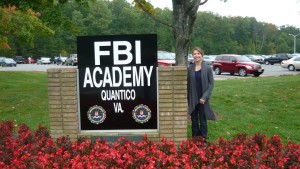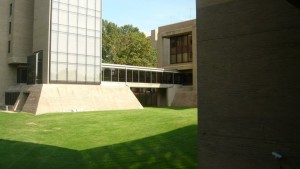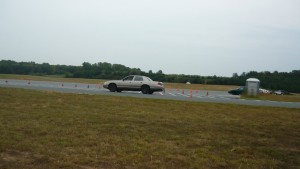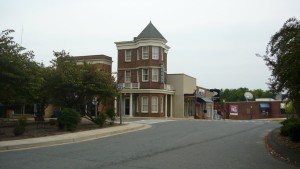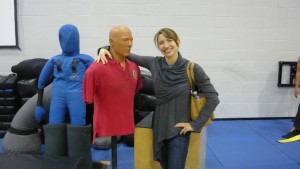During the Left Coast Crime Conference a few weeks ago, I attended, “Forensic Science Day.” We were  promised that the “California Forensic Science Institute (CFSI) and the Crime Lab Project (CLP) would provide expert speakers and programming.”
promised that the “California Forensic Science Institute (CFSI) and the Crime Lab Project (CLP) would provide expert speakers and programming.”
And let me tell you, they weren’t kidding.
The eight hour event included a tour of the Hertzberg-Davis Forensic Science Center on the CSU Los Angeles campus, a lab which serves the LAPD and the LA Sheriff’s Department.
It kicked off with Don Johnson (not the one of Miami Vice fame-although he was wearing a pastel shirt) from the school of Criminal Justice and Criminalistics walking us through a quadruple homicide as it was initially encountered by the CSI team. Which meant dozens of photos of the victims as they were found, in addition to the trail of carnage through their house which gave you an extremely clear picture of the attack and how it proceeded. It wasn’t pleasant.
Now, I watch a lot of procedural shows on television-not CSI, because frankly I think it’s just silly. But the Law and Order franchise, The Closer, Southland, and in the past The Wire and The Shield. I’m no stranger to graphic depictions of violence. And what we were seeing was still photos, not video. 
Yet what really struck me was how when it comes down to it, there is a difference between a fictionalized vs. a real crime scene. I had expected to be somewhat desensitized, but somehow knowing that what we were seeing had really happened, that these were real victims who weren’t going to get up and walk away, made it almost too much to stomach. It didn’t help that two of the victims were an elderly disabled woman and a four year-old girl. During their close-ups, I almost had to leave the room.
 In the course of researching serial killers a few years ago, I experienced something similar. It doesn’t matter how many times you’ve sat through “Silence of the Lambs,” or movies of that ilk. When I read about some of the things that serial killers had actually done to their victims, it was a gut punch. Some of the stories were so horrible it took weeks to get them out of my head. There were things I encountered that honestly I wish I’d never seen- and those of you who have read my books know that I don’t shy away from violent crime. So it surprised me to have such a strong reaction.
In the course of researching serial killers a few years ago, I experienced something similar. It doesn’t matter how many times you’ve sat through “Silence of the Lambs,” or movies of that ilk. When I read about some of the things that serial killers had actually done to their victims, it was a gut punch. Some of the stories were so horrible it took weeks to get them out of my head. There were things I encountered that honestly I wish I’d never seen- and those of you who have read my books know that I don’t shy away from violent crime. So it surprised me to have such a strong reaction.
Since Columbine there’s been a lot of discussion regarding whether the violence on TV, in movies, and in video games has desensitized kids to a point where they’re more liable to commit violence in real life. I h ave to wonder, based on my reaction to that quadruple homicide scene. Is it true that for some people, the line between truth and fiction has become blurred? Or would a kid hooked on Grand Theft Auto have the same reaction I did to images from a real crime scene? I suspect that for the most part, they would. What do you think?
ave to wonder, based on my reaction to that quadruple homicide scene. Is it true that for some people, the line between truth and fiction has become blurred? Or would a kid hooked on Grand Theft Auto have the same reaction I did to images from a real crime scene? I suspect that for the most part, they would. What do you think?
On a side note, the rest of the day was very cool. A trace evidence specialist led us through the Phil  Spector case (which, oddly enough, wasn’t nearly as disturbing. But then, what happened to Lana Clarkson wasn’t as terrible as what was done to that little girl). We also had a fantastic presentation from a “Questioned Documents” examiner who explained exactly how easy it is to forge a signature, and what to do to combat that (sign your name over itself 2-3 times) and we toured the labs, including the rooms that hold stainless steel water tanks where guns are fired to match ballistics from crime scenes. Very cool. More information on the lab and the Crime Lab project is available here.
Spector case (which, oddly enough, wasn’t nearly as disturbing. But then, what happened to Lana Clarkson wasn’t as terrible as what was done to that little girl). We also had a fantastic presentation from a “Questioned Documents” examiner who explained exactly how easy it is to forge a signature, and what to do to combat that (sign your name over itself 2-3 times) and we toured the labs, including the rooms that hold stainless steel water tanks where guns are fired to match ballistics from crime scenes. Very cool. More information on the lab and the Crime Lab project is available here.

